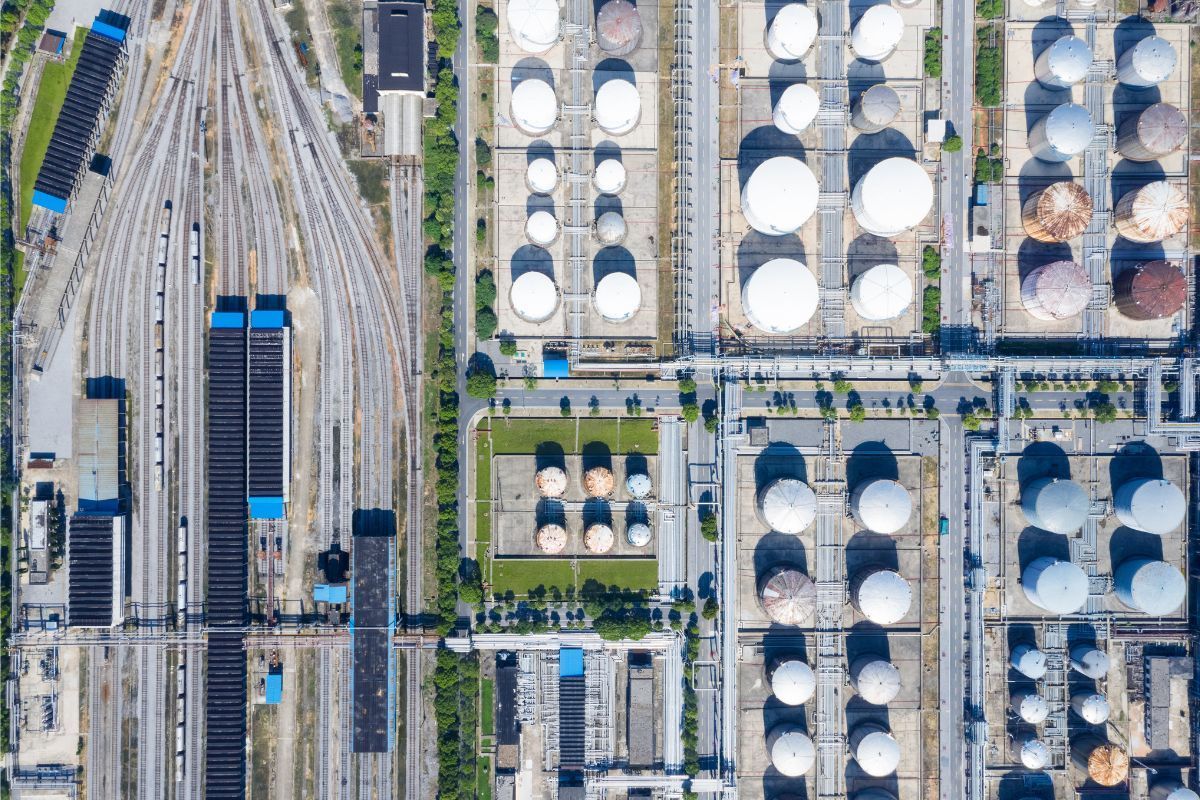Top 10 Emerging Risks Facing Oilfield Service Companies in 2025 and Beyond
See How We're Different
Or Call Us: (281) 823-8262

The oilfield services sector stands at a pivotal juncture in 2025, navigating a complex landscape shaped by evolving market dynamics, technological advancements, and global socio-political shifts. With the global oilfield services market projected to reach an impressive $232.7 billion by 2025, companies in this space face unprecedented opportunities alongside significant risks. Understanding these emerging risks is essential for stakeholders aiming to sustain growth and resilience in an industry marked by volatility and transformation. This article explores the top 10 emerging risks confronting oilfield service companies today and in the foreseeable future.
1. Market Volatility and Declining Upstream Spending
One of the most immediate challenges for oilfield service companies is the volatility of oil prices and its direct impact on upstream spending. Recent forecasts by Baker Hughes indicate a sharper decline in global oil producer spending in 2025, driven by tariffs and weakening crude demand, with expectations of a high-single-digit drop in upstream investments. This reduction in capital expenditure directly affects service providers, as fewer drilling and exploration projects translate to diminished demand for their offerings.
Moreover, major players like Halliburton have already begun reducing their workforce across several divisions due to slumping oil sector activity and increased operational costs, highlighting how market pressures are forcing companies to recalibrate their strategies. This environment necessitates agility and cost efficiency for oilfield service companies to maintain profitability amid shrinking budgets.
In addition to workforce reductions, many companies are also reevaluating their technological investments. The shift towards automation and digital solutions has become more pronounced as firms seek to optimize operations and reduce costs. Innovations such as advanced data analytics and AI-driven drilling technologies are being prioritized, as they promise to enhance efficiency and minimize waste. This technological pivot not only helps in navigating the current economic landscape but also positions companies to better respond to future market recoveries.
Furthermore, geopolitical factors play a significant role in shaping the oil market landscape. Ongoing tensions in oil-producing regions can lead to sudden price fluctuations, further complicating the financial planning for oilfield service companies. These geopolitical uncertainties, coupled with the rise of renewable energy sources, are prompting many firms to diversify their portfolios and explore alternative energy ventures. By investing in sustainable practices and technologies, oilfield service providers can not only mitigate risks associated with market volatility but also align with the global shift towards greener energy solutions.
For more details on these market trends, see the Baker Hughes forecast on producer spending.
2. Energy Transition Pressures and Regulatory Challenges
The global push towards cleaner energy sources and sustainability is reshaping the oilfield services sector. While traditional energy demand remains resilient, companies are increasingly under pressure to align with environmental regulations and reduce carbon footprints. This dual force creates a complex operating environment where firms must balance ongoing oil and gas operations with investments in greener technologies and practices.
According to industry experts, the sector is navigating a "complex crossroads" shaped by these energy transition pressures, which influence spending patterns, project viability, and long-term strategic planning. Regulatory frameworks are tightening worldwide, requiring enhanced environmental compliance and reporting, which can increase operational costs and introduce new risks related to non-compliance.
Moreover, the transition to renewable energy sources is not merely a regulatory challenge but also a market opportunity. Companies that invest in innovative technologies, such as carbon capture and storage, or explore alternative energy sources like hydrogen, can position themselves as leaders in the evolving energy landscape. This shift necessitates a reevaluation of existing business models, as firms must integrate sustainability into their core strategies while still maintaining profitability in a competitive market.
Understanding these dynamics is critical for companies aiming to future-proof their operations. The role of digital transformation cannot be overlooked; leveraging data analytics and automation can enhance operational efficiency and compliance tracking. For further insight, review the expert analysis on energy transition impacts.
3. Technological Disruption and Cybersecurity Threats
Technological innovation is a double-edged sword for oilfield service companies. On one hand, advancements such as artificial intelligence (AI) and machine learning (ML) offer powerful tools for predictive maintenance, operational efficiency, and risk mitigation. For example, 65% of oil and gas companies now leverage AI for predictive maintenance, which can reduce equipment downtime by up to 30%, significantly improving operational reliability. These technologies enable real-time data analysis, allowing companies to anticipate equipment failures before they occur, thus minimizing costly interruptions and enhancing overall productivity.
On the other hand, increased digitalization expands the cyberattack surface, exposing critical infrastructure to potential threats. Research into cybersecurity challenges within offshore oil and gas operations highlights the vulnerabilities inherent in industrial cyber-physical systems (ICPS). These systems are often targeted by sophisticated attacks that can disrupt operations, cause safety incidents, or lead to data breaches. The interconnected nature of these systems means that a single breach can have cascading effects, potentially compromising not just one facility but an entire network of operations across multiple locations.
Robust cybersecurity measures are no longer optional but essential for safeguarding assets and maintaining trust with clients and regulators. The detailed study on cybersecurity challenges in offshore oil and gas offers valuable perspectives on this critical risk. Furthermore, the implementation of advanced security protocols, such as intrusion detection systems and continuous monitoring, is becoming increasingly vital. Companies are also investing in employee training programs to raise awareness about phishing attacks and other social engineering tactics that cybercriminals frequently employ. This holistic approach to cybersecurity not only protects sensitive data but also fosters a culture of security mindfulness among all employees, which is essential in today’s rapidly evolving digital landscape.
4. Operational Risks and Infrastructure Integrity
Maintaining the integrity of physical infrastructure such as flowlines, pipelines, and drilling equipment is a perennial concern for oilfield service companies. Failures can lead to costly downtime, environmental damage, and safety hazards. Recent studies employing Geographic Information Systems (GIS) combined with machine learning techniques have enhanced risk analysis capabilities, enabling companies to predict and mitigate potential failures more effectively.
These predictive models are becoming indispensable tools for proactive maintenance and risk management, helping companies avoid catastrophic incidents and optimize asset lifecycles. However, integrating such advanced technologies requires investment and skilled personnel, which can be challenging amid tightening budgets and workforce reductions.
Moreover, the increasing complexity of oilfield operations due to the integration of renewable energy sources and advanced drilling techniques adds another layer of risk. Companies must not only monitor traditional infrastructure but also adapt to new technologies and methodologies that can impact operational integrity. This dynamic environment necessitates continuous training and development of staff to ensure they are equipped with the latest knowledge and skills to manage these evolving challenges effectively.
In addition to the technological advancements, regulatory pressures are also influencing how companies approach risk management. Stricter environmental regulations and safety standards require organizations to implement more rigorous monitoring and reporting practices. This can lead to increased operational costs but also presents an opportunity for companies to enhance their reputation by demonstrating a commitment to safety and sustainability. By adopting a comprehensive risk management framework that includes both technological and regulatory considerations, oilfield service companies can better navigate the complexities of modern operations and safeguard their infrastructure against potential threats.
For a deeper dive into predictive risk analysis, see the research on flowline risk analysis using GIS and machine learning.
5. Climate Risks and Environmental Liability
Climate change poses multifaceted risks to oilfield service companies, from physical impacts such as extreme weather events to regulatory and reputational pressures. The Society of Actuaries’ 18th Annual Survey of Emerging Risks identifies climate risks as a top concern, alongside disruptive technology and geopolitical instability. These factors collectively influence insurance costs, investment decisions, and stakeholder expectations.
Companies must enhance their resilience by adopting sustainable practices, improving environmental monitoring, and preparing for the financial implications of climate-related liabilities. Failure to do so can result in significant economic losses and damage to corporate reputation.
Moreover, the transition to a low-carbon economy is accelerating, prompting oilfield service companies to rethink their operational strategies. This shift necessitates investments in renewable energy technologies and the development of carbon capture and storage solutions. Companies that proactively engage in these initiatives not only mitigate risks but also position themselves as leaders in sustainability, potentially attracting environmentally conscious investors and clients. Furthermore, as regulatory frameworks become increasingly stringent, organizations must stay ahead of compliance requirements to avoid hefty fines and operational disruptions.
In addition to regulatory challenges, the social implications of climate change cannot be overlooked. Communities are becoming more vocal about their environmental concerns, and public opinion can significantly influence a company's market position. Engaging with local stakeholders and demonstrating a commitment to environmental stewardship can enhance a company's reputation and foster trust. By integrating climate risk assessments into their business models, oilfield service companies can create more resilient operations that are better equipped to handle the uncertainties of a changing climate, ultimately ensuring long-term viability in an increasingly competitive landscape.
6. Geopolitical Instability and Supply Chain Disruptions
Geopolitical tensions continue to cast a shadow over the global oilfield services market. Conflicts, trade disputes, and sanctions can disrupt supply chains, restrict market access, and increase operational costs. The interconnected nature of the oil and gas industry means that instability in one region can have ripple effects worldwide. For instance, a conflict in the Middle East can lead to fluctuations in oil prices, impacting markets as far away as North America and Europe. The volatility of these prices can create uncertainty for companies that rely heavily on predictable costs for budgeting and planning.
Companies must develop robust risk management strategies to navigate these uncertainties, including diversifying suppliers, enhancing supply chain transparency, and engaging in scenario planning. The SOA’s survey underscores geopolitical instability as a key emerging risk, emphasizing the need for vigilance in this area. Furthermore, organizations are increasingly leveraging technology to bolster their resilience. Advanced analytics and artificial intelligence can help predict potential disruptions by analyzing geopolitical trends and supply chain vulnerabilities. By adopting these technologies, firms can not only react more swiftly to emerging threats but also proactively identify opportunities in less stable markets, potentially positioning themselves ahead of competitors who may be slower to adapt.
Moreover, the role of government policies cannot be overlooked. Regulatory changes, such as new tariffs or environmental regulations, can further complicate the landscape for oilfield services. Companies must stay informed about both domestic and international policy shifts to adjust their strategies accordingly. This is particularly true in regions where governments are increasingly prioritizing energy independence and sustainability, leading to a shift in investment towards renewable energy sources. As a result, traditional oil and gas companies may need to rethink their operational frameworks and consider how to integrate alternative energy solutions into their portfolios, ensuring they remain competitive in a rapidly evolving market.
7. Workforce Challenges and Talent Retention
Workforce dynamics are shifting rapidly within the oilfield services sector. The reduction in oil sector activity has led to layoffs and restructuring, as seen with Halliburton’s recent workforce cuts. At the same time, the industry faces challenges in attracting and retaining skilled talent, particularly in emerging technology domains like AI and cybersecurity. The competition for skilled workers is intensifying, not just within the oil and gas industry but across various sectors, as companies increasingly rely on technology to drive efficiency and innovation. This has created a talent war where organizations must differentiate themselves to attract the best candidates.
Addressing these challenges requires companies to invest in training, foster inclusive workplace cultures, and offer competitive career development opportunities. Initiatives such as mentorship programs and partnerships with educational institutions can help bridge the skills gap and prepare the next generation of workers for the industry's evolving demands. Moreover, companies that prioritize employee well-being and work-life balance are more likely to retain talent, as workers increasingly seek environments that support their personal and professional growth. Without a capable and motivated workforce, companies risk operational inefficiencies and diminished innovation capacity. As the industry continues to evolve, organizations must remain agile and responsive to the changing needs of their workforce to ensure long-term success.
8. Financial Risks and Capital Access
Access to capital remains a critical concern amid fluctuating oil prices and shifting investor priorities. The anticipated decline in upstream spending means oilfield service companies may face tighter financing conditions and increased scrutiny from lenders and investors focused on environmental, social, and governance (ESG) criteria.
Financial risk management, including prudent debt management and transparent ESG reporting, will be vital for securing funding and maintaining investor confidence in a rapidly evolving market.
9. Regulatory Compliance and Legal Risks
Regulatory landscapes are becoming increasingly complex, with new rules targeting environmental protection, safety standards, and corporate governance. Non-compliance can result in hefty fines, legal actions, and operational shutdowns. Oilfield service companies must stay abreast of regulatory changes across jurisdictions and invest in compliance systems to mitigate legal risks.
Proactive engagement with regulators and industry bodies can also help companies anticipate changes and influence policymaking in ways that balance operational feasibility with societal expectations.
10. Innovation Adoption and Technology Integration Risks
While innovation offers pathways to improved efficiency and competitiveness, the adoption of new technologies carries inherent risks. These include implementation failures, integration challenges with legacy systems, and cybersecurity vulnerabilities. Companies must carefully evaluate technology investments, pilot new solutions, and develop change management strategies to ensure successful integration.
Balancing innovation with operational stability is crucial to avoid disruptions that could undermine client trust and financial performance.
Conclusion: Navigating a Complex Future
The oilfield services sector in 2025 and beyond faces a multifaceted risk landscape that demands strategic foresight, technological agility, and operational resilience. From market volatility and energy transition pressures to cybersecurity threats and climate risks, companies must adopt comprehensive risk management frameworks to thrive.
Leveraging advanced technologies such as AI for predictive maintenance and GIS-based risk analysis can provide competitive advantages, while proactive engagement with regulatory and geopolitical challenges will safeguard long-term sustainability. As the industry evolves, those who anticipate and adapt to these emerging risks will be best positioned to capitalize on opportunities in a changing energy world.
For a detailed overview of the market outlook and sector pressures, visit the ZipDo Education Reports on oilfield industry statistics.










